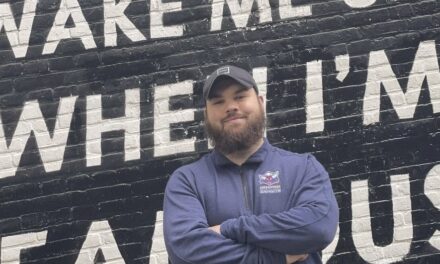
OCTOBER 11, 2024
5 things to do
Get the Deals Done
It’s 11 days into Q4 in the business world. It’s a great time to connect and negotiate with potential sponsors, advertisers, and other revenue-related partners.
The timing works well for two reasons. First, most are finalizing their budgets for 2025. If you’ve ever heard, “Sorry, it’s not in the budget,” now’s the time to get into that budget. Second, some prospective partners, especially at bigger companies, may have an unspent marketing budget left. They’ll want to use it in 2024 rather than lose it (and its impact.)
So, to help you master outreach and negotiations, we’ve brought back these five things to do:
1. Publish a media kit: Be prepared, says Lindsey Chastain, founder of The Writing Detective, an agency specializing in digital marketing and PR.
A media kit introduces you and your content business to the prospect. It also should showcase the value you bring to a potential partner by detailing your audience demographics, content samples, testimonials, analytics, etc.
Helpful Related Resource: How To Make a Media Kit for Your Content Business
2. Know your worth. Research the typical rates and arrangements for paid sponsorships, advertisements, or other deals in your industry. Marketers interested in partnerships are usually interested in your audience size, engagement levels, etc. Lindsey says this information can help you understand pricing and deal parameters.
In addition to standard internet searches, look at the media kits or sites of media outlets and similar creators in your industry. Refer to industry-related groups that may have rate ranges. Reach out to your fellow content entrepreneurs and ask them what they charge.
Factor in what you bring to the table, too. You may have a sought-after content tilt. Perhaps your audience is smaller than others, so you need to stand out in another way, or maybe you can show proof of highly successful previous deals.
Katie Stoller, an independent consultant who operates the Influencer Inside Guide, says content entrepreneurs should be ready to talk money. “I always tell influencers/talent that they should have a general guideline of what they quote brands for each deliverable they offer,” she says.
3. Know your boundaries: Katie advises entrepreneurs to have stretch goals and bottom lines and be flexible between those two extremes.
“Some talent managers have such strict guidelines against taking lower than expected numbers, but it’s important to see the big picture and see if there are other things you could get from the partnership,” she says.
If the offer is in the standard realm but below your goal, weigh how the brand partnership might have other benefits, such as clout, media attention, relationship-building, portfolio-building, etc.
For example, Katie says, a household brand name like Pepsi might pay less for a partnership because it has a reduced budget, but it might come back in three months with a really solid offer for another program.
“The negotiation song and dance is complex but also extremely simple if you keep those principles in mind,” she says. “The biggest driver of this industry is relationships, so it’s imperative these negotiations are respectful on both ends. Be firm, stand your ground, but do it with respect and transparency.”
4. Talk money: You know your worth, but that doesn’t mean you should have or publish standard rates for sponsorship and partnerships.
“I am staunchly against standardization in this industry. Too many factors go into each deal for anything to be standard,” Katie says.
For example, a deal for a reel with Pepsi could include a straightforward brief with “shoot-whatever-you-want” directions. An Instagram Reel for Coke might include an offsite shoot, five talking points, and a special outfit. All those elements need to play into the pricing.
So, rate cards don’t work well, but you still need a number in mind, as the content entrepreneur usually gives voice to the first number.
But that doesn’t mean you can’t ask questions before you propose the deal.
Lindsey advises entrepreneurs to ask about the brand’s goals for the partnership. Then, tailor your proposal so you can achieve those objectives. Leave room to be flexible based on their needs and budget. Negotiables could include assets, exclusivity, campaign length, timing, performance bonuses, etc.
“Negotiating allows for customization to meet specific brand needs, showcasing the additional value you can provide, building relationships and trust, and adjusting pricing based on performance,” she says.
Katie doesn’t like it when a creator asks for the brand’s budget. To her, it indicates either they don’t understand that most brand budgets aren’t specific to a single deal or they don’t have a clue on how to price it.
5. Keep an open mind: Lindsey tried to negotiate a deal for several of her clients with a podcast. That podcast creator had set packages and pricing. They wouldn’t negotiate nor provide data to help her clients make an informed decision.
“That podcast lost out on three interviews they really wanted because of their lack of willingness to negotiate or demonstrate their core value,” she says.
Lindsey’s takeaway? “If the proposal provides a high value to your audience, be willing to negotiate,” she says.
– Ann Gynn
tilt publishing book club
- ICYMI: Book Coach Cat Margulis Helps Nonfiction Writers [Content Entrepreneur Spotlight, The Tilt]
- Why Traditional Publishers Usually Release Hardback Books First [Huffington Post UK]
- Managing Your Presales, Crowdfunding, and Book Launch [Lulu]
- Heading to Content Marketing World in San Diego this month? Catch the Tilt Publishing authors who are presenting, including Pam Didner (The Modern AI Marketer in the AI Era), Brian Piper (Epic Content Marketing for Higher Education), Jenny Magic (Change Fatigue), A. Lee Judge (CASH), and Erika Heald and Bernie Borges (contributors, The Content Entrepreneur).
5 things to know
Money
-
Ads out: X’s creator revenue-sharing program has changed. Creators no longer get money from ads shown in their replies. Now, it’s based on the engagement of X’s paid users of their content. [Social Media Today]
Tilt Take: Good to know. Not good (old or new) for a solid revenue stream. -
Token TV: FanTV hit 4M on-chain users with 10M transactions. FanTV rewards users with xFanTV tokens for creating and watching videos and engaging with and sharing content. Its primary audience is in India. [StreetInsider.com]
Tilt Take: Rewards, whether on the blockchain or not, can be a good idea for building and growing communities.
Audiences
-
Ads in: Sixty-two percent of listeners actively engage and pay close attention to podcast ads, and 66% express strong passion for their favorite podcasts, according to a MAGNA Media Trials study. [Sounds Profitable]
Tilt Take: The immersive experience of podcasts means it’s hard to ignore the ads, so if they’re relevant (and engaging themselves), listeners will act.
Tech and Tools
-
Tok boosts: Among the new ad tools on TikTok are Smart+, an automated targeting, bidding, and creative selection tool, and conversion lift studies, which measure TikTok’s business impact beyond last-click attribution. [Search Engine Land]
Tilt Take: Analytics – whether used by you or AI – help make the most of your resources to connect with your target audience.
And Finally
-
Real life: Substack’s taking writers on its platforms and putting them in real life with events, such as pop-up readings and debates. It wants to deepen the connection between subscriber and creator. Right now, Substack is organizing and paying for its official events, and the creators are inviting their audiences. [Business Insider]
Tilt Take: Real-life interactions, whether a meetup, a seminar, or pop-up reading, go a long way in strengthening your relationship with the audience.
5 things from the tilt
- Tune in to the Tilt Your Business podcast at 12 p.m. US EDT Tuesday with hosts Michelle Peterson Clark and Ann Gynn.
- Joe dives into the research to see what is really working in content creation and audience building. (Content Inc.)
- Joe and Robert ask are humans needed for podcasts anymore? (This Old Marketing)
- Matt and Lauren help you maximize your book’s potential with early readers like beta readers, sensitivity readers, and industry reviewers. (Publish & Prosper)
- ICYMI: 10+ Books Content Business Owners Should Read
Get more of the Full Tilt stories on TheTilt.com.
Know a content creator who’s going full tilt? DM us or email [email protected].
Want to advertise on The Tilt? Go here.
Or email us at [email protected].
Was this email forwarded to you? Get your own sub here.
Copyright ©2024 Lulu Press, Inc. All rights reserved.
Update your preferences | Unsubscribe | 700 Park Offices Dr., Suite 250, Durham, NC 27709





